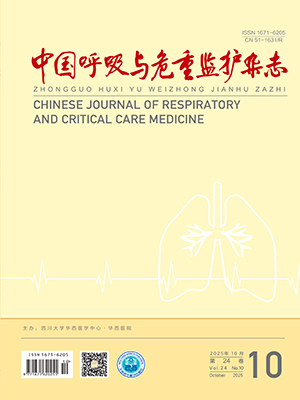Objective To assess the predictive value of alveolar dead space fraction ( ADSF) for severity and reperfusion of acute pulmonary embolism( APE) . Methods 39 consecutive patients with APE were enrolled in a perspective study from July 2004 to March 2007. All patients were divided into a large pulmonary embolism group ( LPE) and a small pulmonary embolism group ( SPE) based to the mass and location of the embolus. The patients of the LPE group received thrombolytic therapy and anticoagulation,while the patients of the SPE group received anticoagulation only. CTPA or lung scintigraphy was performed before and after treatment to confirm the resolve condition of the embolism after treatment. Pressure of endexpired carbon dioxide ( PETCO2 ) and blood gas analysis ( including PaCO2 ) were measured at the time of run-in and 30 days after treatment by bedside. ADSF was calculated by PET CO2 and PaCO2 . Results Among 39 APE patients, there were 18 patients in the LPE group, while 21 in the SPE group. The ADSF of the LPE group before treatment were higher than that of the SPE group ( 0. 34 ±0. 078 vs. 0. 18 ±0. 027,P lt;0. 05) . The ADSF decreased significantly after treatment in the patients with full reperfusion ( 0. 09 ±0. 04 vs. 0. 28 ±0. 11, P lt;0. 01) . Conclusion As a bedside test, ADSF can reflect the mass of embolism and the reperfusion condition, and is useful in monitoring the disease.
Citation: HANWei,TANG Huaping,HAO Wanming,SUN Wenxin,LI Shuangbao. Alveolar Dead Space as a Predictor of Severity and Reperfusion of Pulmonary Embolism. Chinese Journal of Respiratory and Critical Care Medicine, 2010, 9(5): 520-522. doi: Copy
Copyright © the editorial department of Chinese Journal of Respiratory and Critical Care Medicine of West China Medical Publisher. All rights reserved




